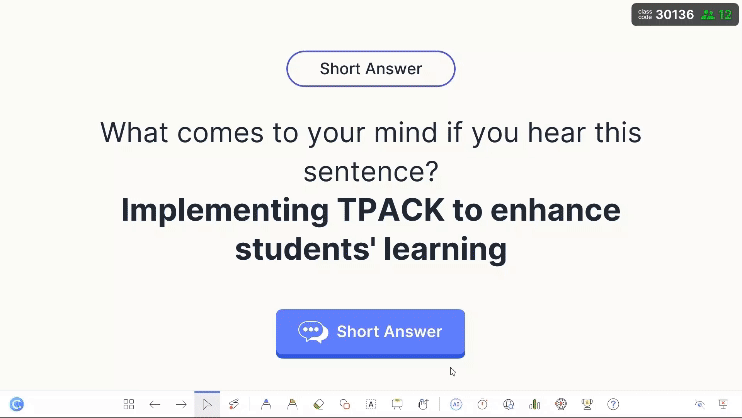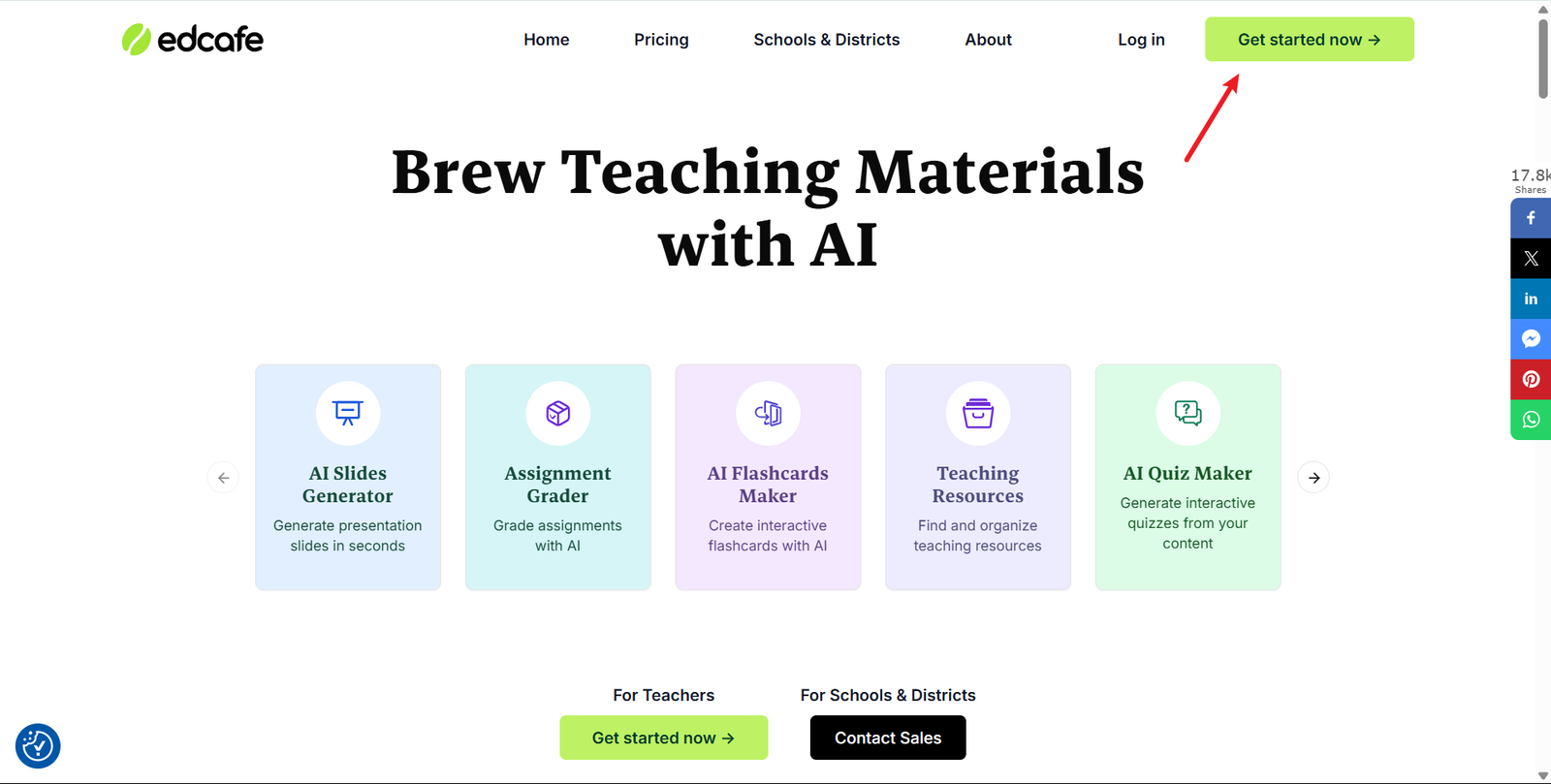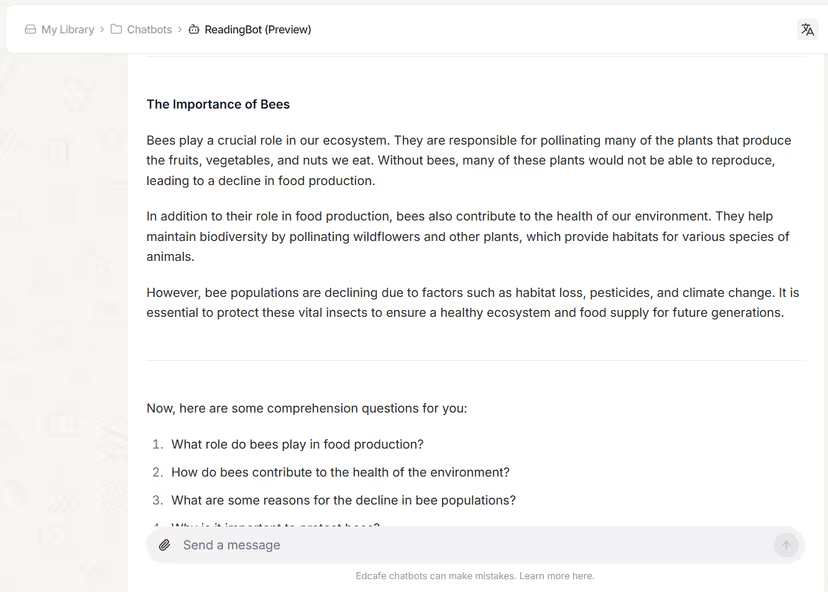Ever notice how some classroom discussions flow like engaging conversations while others feel like pulling teeth? The difference often comes down to student discourse, the structured ways students communicate their thinking, challenge ideas, and build on each other’s thoughts.
When done right, student discourse transforms classrooms from lecture halls into thinking laboratories. Here’s how to shift your classroom from compliance to curiosity, one conversation at a time.
What Is Student Discourse?

Student discourse is the exchange of ideas between students through discussion, debate, and collaborative conversation. It goes beyond simple Q&A sessions to create spaces where students articulate their thinking, respond to peers, and develop ideas together.
Think of it as the difference between asking “What’s 2+2?” and asking “How did you solve that problem, and could there be another way?” The first gets an answer; the second starts a conversation.
Key Benefits of Student Discourse
- Develops critical thinking by requiring analysis and synthesis in real-time
- Builds communication confidence across personality types
- Strengthens peer learning with more relatable explanations
- Reveals student thinking to help teachers address misconceptions
- Prepares students for collaboration in future careers
Core Strategies for Student Discourse
1. Think-Pair-Share
This classic strategy works because it gives every student think time and a low-stakes practice round before whole-class sharing.
Basic structure:
- Think (1–2 minutes): Students reflect individually
- Pair (2–3 minutes): Partners discuss their thoughts
- Share (5–10 minutes): Pairs share key ideas with the class
Powerful variations:
- Think-Pair-Square: Two pairs combine to deepen and compare insights before sharing
- Write-Pair-Share: Add written reflection before pairing
- Think-Pair-Share-Compare: Groups compare conclusions before whole-class discussion
💡Science example: “Think about what would happen if the sun disappeared. Pair up to discuss immediate and long-term effects. Share your most surprising realization.”
Read more on How to Implement Think Pair Share in the Classroom: 4 Creative Ways to Get Started.
2. Small Group Discussions with Defined Roles

Small groups create safe spaces for testing ideas, but they need structure to prevent one student from dominating or others from hiding.
Roles to rotate:
- Facilitator: Keeps the discussion on track
- Timekeeper: Manages pace
- Recorder: Captures key ideas
- Devil’s Advocate: Challenges assumptions
- Connector: Links to real-world or past learning
💡Math example: Groups solve multi-step problems with each member explaining one step. The Devil’s Advocate asks, “Could we solve this differently?” The Connector links to yesterday’s lesson.
3. Gallery Walk Discussions & Silent Discussions (Write-Around)
These two strategies can complement each other and spark both movement and reflection.
Gallery Walk:
- Students rotate around posted prompts or student work
- Discuss in groups, add sticky note comments
- End with whole-class synthesis
Silent Discussion:
- Students rotate silently, responding to questions in writing
- Can add new thoughts or respond to others
- Creates visual conversation threads
- Great for all learners, especially those who prefer quiet thinking
💡ELA example: Post interpretations of a poem’s theme. Use a mix of silent responses and group discussion to unpack each layer.
4. Socratic Seminars and Fishbowl Discussions
These student-led discussions promote deeper engagement and accountability.
Socratic Seminar:
- Students ask and answer peer-generated questions
- The teacher observes silently
- Debrief includes content and process reflection
Fishbowl Variation:
- The inner circle discusses, while the outer circle observes
- Midway, groups switch roles
- Debrief includes meta-discussion about what made the discussions effective
💡History example: The inner circle debates whether a historical figure was heroic or harmful using primary sources. Outer circle tracks respectful disagreement.
We've rounded down on Socratic Seminars 101: A Practical Guide to Engaging Student-Led Discussions which you might want to check out!
5. Structured Academic Controversy

Students explore complex topics from multiple perspectives, then work toward consensus.
Steps:
- Student pairs research and present assigned positions
- Switch roles and argue the opposing side
- Drop positions and seek consensus
- Reflect on changed perspectives
💡Science example: “Should we pursue genetic modification of crops?” Students defend both sides before exploring a shared, evidence-based position.
6. Open-Ended Questioning Techniques
These can be embedded into every strategy to encourage deeper thinking.
Use prompts like:
- “What makes you say that?”
- “How does that relate to ___?”
- “Could there be another way?”
- “What evidence supports your idea?”
💡 Quick tip: Follow any answer with “Tell me more about that.” It signals curiosity over correctness.
To help you go deeper in crafting the perfect questions for students, here's our guide on Effective Questioning Techniques to Increase Student Participation.
7. Incorporate Digital Tools

Make live discussions more inclusive or extend conversations beyond class time with the use of tech tools to support all learners and hear from every student in the class.
Consider an integrated tool, ClassPoint.
Incorporate deeper discussion questions right into your PowerPoint presentation with ClassPoint. ClassPoint, an interactive teaching add-in that lives right inside PowerPoint, allows you to turn regular PowerPoint slides into interactive questions with gamification.
Add Short Answer, Word Cloud, or Slide Drawing activities to capture student thinking on the spot. Then use the prompts in Tip 6 above to dive deeper and call on students with the Random Name Picker. Great for equitable participation in Think-Pair-Shares, Fishbowls, or open-ended Q&A.
💡 Example: During a literature discussion, project a ClassPoint Short Answer slide asking, “What motivates this character’s actions?” Students type in their responses in real time, and you can use the Name Picker to invite students to share more.

Or try an educator-focused, web-based AI app.

While ClassPoint supports live participation, Edcafe AI is your behind-the-scenes teaching assistant. With Edcafe AI, you can:
- Generate differentiated Socratic questions tailored to your lesson objectives with the Lesson Plan Generator and incorporate these into your lesson
- Ask any questions you didn’t get to in a Short Answer Quiz. Review the results and discuss further
- Build AI-powered tutors with the Chatbot feature that guides students through complex topics with thoughtful, layered questioning. Review their chats to hear their thinking
💡Example: Create an AI chatbot that simulates a peer discussion partner. It can challenge students to defend claims about a historical event or compare literary themes across texts, perfect for prep or review.

Check out this curated list of 50+ Best AI Tools for Education Every Teacher Should Know.
Taking Student Discourse Deeper

The Art of the Follow-Up
Transform surface exchanges into deeper dialogue with these moves:
- “What led you to that conclusion?”
- “How does that connect to what ___ just said?”
- “What evidence supports that?”
- “Has anyone thought about this differently?”
These nudge students from performance to thinking.
Building Response Chains
Shift discussions from teacher-centered to peer-to-peer.
Sentence starters:
- “I agree with ___ because…”
- “Building on ___’s idea…”
- “I see it differently because…”
- “That reminds me of…”
Try this routine: require three student replies before jumping in yourself.
To spark further inspiration, here are 100+ Sentence Starters To Help Your Students Write Better and Smarter (Practice Writing with a Custom Chatbot!).
Strategic Wait Time
Silence feels awkward, but it’s essential.
Wait time tips:
- Count to 5 or 10 after asking
- Let students write before speaking
- Use “no hands up” time
- Try “waterfall discussions” (sequential student replies)
Scaffolding for All Learners
Every student needs support, just in different ways.
Reluctant speakers:
- Use written starts
- Practice in pairs first
- Provide participation choices
Dominant speakers:
- Limit turns with tokens
- Assign summarizer roles
- Praise questions, not just answers
English learners:
- Sentence frames
- Home language warm-up
- Visual cues
- Supportive partners
Dive deeper into student support with these 8 Ideas To Master Scaffolding in Education And Boost Learning.
Creating a Risk-Taking Culture
Discourse thrives where mistakes are safe.
Build that culture by:
- Celebrating thinking, not just answers
- Sharing your own confusion
- Encouraging mind-changing
- Praising thoughtful “rough draft” ideas
Avoid responses like:
✖ “No, that’s wrong”
✖ “We don’t have time for that”
✔ “That’s an interesting take—let’s explore it”
Making It Happen in Your Classroom
Don’t try everything at once. Build your student discourse culture gradually:
- Week 1–2: Try Think-Pair-Share with live ClassPoint responses
- Week 3–4: Add wait time and student sentence stems
- Week 5–6: Introduce Fishbowl or Socratic Seminar—prep with Edcafe AI
- Week 7–8: Use Gallery Walks with ClassPoint’s Slide Drawing or sticky note responses
- Week 9–10: Combine strategies and reduce teacher prompts
Daily integration examples:
- Warm-up: Speed Dating discussions using Flip or ClassPoint
- New concept: Think-Pair-Share with live response collection
- Practice: Small group roles with Edcafe-generated prompts
- Wrap-up: Gallery Walk with visual or digital reflections
👉 Need to boost live participation? Use ClassPoint to embed questions directly into your lesson and make every discussion interactive—right from your PowerPoint.
👉 Planning your next discourse-rich lesson? Edcafe AI helps you generate discussion prompts, assign roles, and build adaptive questions tailored to your students’ needs in seconds.
